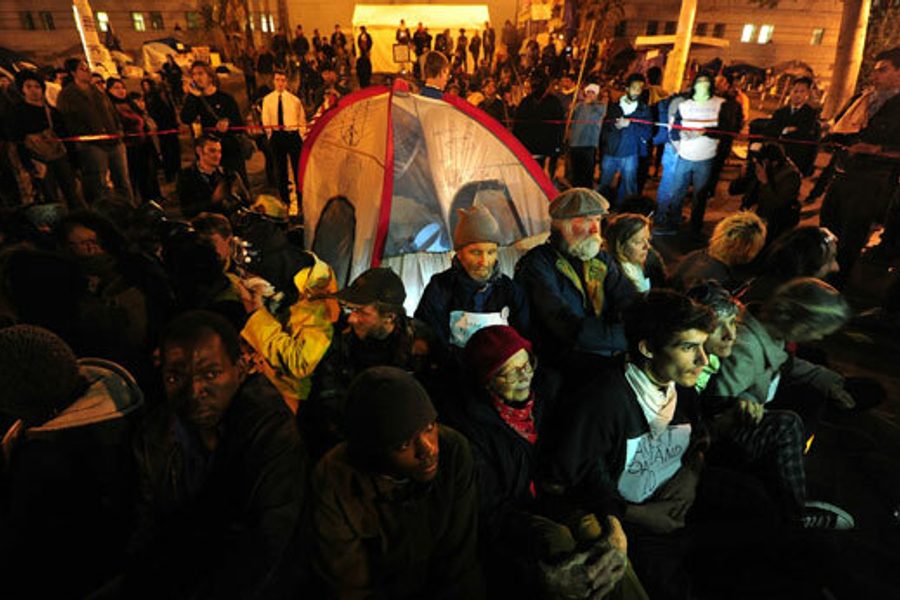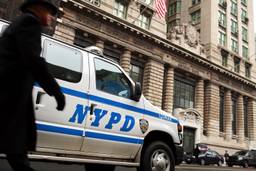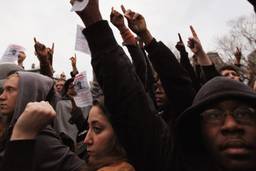
Updated 3:17 PM
Over six decades ago, Chavez Ravine was home to a poor community comprised of Mexican-American families who had been isolated within the Sulfur Canyon by the greater Los Angeles area’s housing discrimination policies. In Bad Sports, author Dave Zirin writes that Chavez Ravine was called “a poor man’s Shangri-la” by its resident and eventually became a “tightly knit valley community.”
But to L.A. city government, the area was seen as a savage, lawless landscape outside of their immediately control. The people of Chavez Ravine ran their own schools and churches and even grew their own food. It was the center of the Zoot Suit Riots, the epic 1943 battles between white sailors and the sharply dressed pachucos.
In the early 1950s, the City of Los Angeles used eminent domain to seize Chavez Ravine in order to use the land for “public housing.” Zirin writes that some residents “departed willing with meager compensation,” while those who remained to fight “had heir homes bulldozed and received nothing.” A group called the Citizens Against Socialist Housing (CASH) suddenly appeared in opposition to the public housing proposal, and the assistant director of the Los Angeles City Housing Authority, Frank Wilkinson. Wilkinson was eventually called before the House Un-American Activities Committee for being a Communist, and later fired from his job and sentenced to a year in jail.
Zirin writes that Wilkinson could never escape the tremendous guilt from having kicked out hundreds of people from their homes.
“It’s the tragedy of my life, absolutely. I was responsible for uprooting I don’t know how many hundreds of people from their own little valley and having the whole thing destroyed,” he said years later.
The land seizure allowed Walter O’Malley to grab Chavez Ravine for a song and build Dodger Stadium. “We’d spent million of dollars getting ready for [public housing], and the Dodgers picked it up for just a fraction of that. It was just a tragedy for the people, and from the city it was the most hypocritical thing that could possibly happen,” said Wilkinson.
With this history in mind, it’s both highly appropriate and deeply ironic that last night the area of Chavez Ravine once against became ground zero to a war against citizens waged by city officials.
Early in the night, the LAPD amassed on the graveyard of Chavez Ravine at Dodger Stadium where a supervisor told officers that they must prepared for some protesters to fight back.
“They’ve got a bunch of concrete gravel and other [things] they’re going to throw at us,” he said. “Please put your face masks down and watch each other’s back.”
A rumor had been circulating that protesters might throw urine and feces at the officers, so some donned white protective body suits. Of course, no bodily excrements were catapulted at officers, and protesters greeted police peacefully. The LA Times applauded the raid and arrest of nearly 300 people, cheering the LAPD’s “successful” clearing out of the camp, and its ability to “avoid fierce confrontations.” (This paragraph was edited to reflect a higher arrest figure).
Footage of heavily armed LAPD raiding the camp:
But there was a fierce confrontation at City Hall, one that crushed the First Amendment rights of the citizens of Los Angeles and its press. Predictable cheering by the media of police behaving like militarized storm troopers aside, the city managed to break some new civil liberty-crushing ground last night when L.A. Mayor Antonio Villaraigosa issued a midnight press release that included this line: “During the park closure, a First Amendment area will remain open on the Spring Street City Hall steps.”
The concept of a “First Amendment area” would surely have sent chills up the spines of the Founding Fathers. The very purpose of having press passes is so reporters can be identified and officers can allow them to cross police lines and cover what’s happening to protesters, not so they can be tagged by the state and held in pens like cattle as they watch the action from afar.
Luckily, a few journalists remembered what the First Amendment means and continued to tweet the event even though the LAPD had instructed them not to. “I think I heard somebody say they weren’t allowed to use their cellphones or Tweet or anything like that,” said officer Karen Rayner at LAPD media relations to LA Weekly. KNX news radio confirmed to LA Weekly that their reporter at the scene had been “embargoed” from leaking information until the eviction was over. On the other coast, another police raid razed Occupy Philadelphia, resulting in the arrests of 50 people. A $50 million renovation project is planned for the plaza that had been home to the camp.
The establishment media had remained silent over the past decade, or so, as the increasingly authoritarian government crushed the rights of non-traditional, “uncredentialed” media. Bloggers and citizen journalists are all too familiar with being harassed, intimidated, and arrested by police at protests. It’s only now that this encroachment on civil liberties includes traditional outlets that journalists are beginning to raise some objections. For example, the NYPD’s harassment of press during the Occupy Wall Street raid brought the wrath of the media to Mayor Bloomberg’s doorstep.
If only similar outrage could be summoned for the 5,000 citizens arrested since the beginning of the Occupy movements, who possess the First Amendment right to peaceably assemble, when they’re systematically hounded by militarized police.

I hope you found this article important. Before you leave, I want to ask you to consider supporting our work with a donation. In These Times needs readers like you to help sustain our mission. We don’t depend on—or want—corporate advertising or deep-pocketed billionaires to fund our journalism. We’re supported by you, the reader, so we can focus on covering the issues that matter most to the progressive movement without fear or compromise.
Our work isn’t hidden behind a paywall because of people like you who support our journalism. We want to keep it that way. If you value the work we do and the movements we cover, please consider donating to In These Times.



